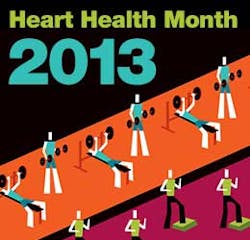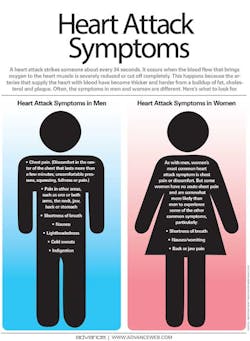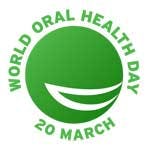Heart attacks: Are you ready?
University of Buffalo’s Behling Simulation Center is the nation’s first simulation center that focuses on inter-professional collaboration and education for health care providers.(9)
For more information on medical emergencies in the dental office, visit the referenced websites.(10,11)
Last, but not least, March 20 is World Oral Health Day! See the section of this newsletter for ideas and materials to help you better serve your community!
References
1. Roger VL, Lloyd-Jones DM, Benjamin EJ et al. Heart disease and stroke statistics—2012 update: a report from the American Heart Association. Circulation 2012; 125 (1):e2-e220.
2. Bernard SA, Gray TW, Buist MD, Jones BM, Silvester W, Gutteridge G, Smith K. Treatment of comatose survivors of out-of-hospital cardiac arrest with induced hypothermia. N Engl J Med 2002; 346(8):557-63.
3. Hypothermia after Cardiac Arrest Study Group. Mild therapeutic hypothermia to improve the neurologic outcome after cardiac arrest. N Engl J Med 2002; 346(8):549-56.
4. Erb JL, Hravnak M, Rittenberger JC. Therapeutic Hypothermia After Cardiac Arrest. AJN, July 2012, Vol. 112, No. 7, 38-44.
5. Kodama S, Saito K, Tanaka S, et al. Cardiorespiratory fitness as a quantitative predictor of all-cause mortality and cardiovascular events in healthy men and women: a meta-analysis. JAMA. 2009; 301:2024-2035.
6. Stump CS, Henriksen EJ, Wei Y, Sowers JR. The metabolic syndrome: role of skeletal muscle metabolism. Ann Med. 2006; 38: 389-402.
7. http://nursing.advanceweb.com/SharedResources/Downloads/2013/021113/HeartHeath.pdf.
8. http://www.webmd.com/heart-disease/heart-attack-symptoms-emergency?page=2.
9. http://www.buffalo.edu/ubreporter/archive/2011_06_30/dental_simulation.html.
10. New Zealand Code of Practice Medical Emergencies in Dental Practice. http://www.dentalcouncil.org.nz/.
11. ADA Medical Emergencies. http://www.ada.org/4737.aspx?currentTab=2.
Sincerely,
Maria Perno Goldie, RDH, MS
To read previous RDH eVillage FOCUS introductions by Maria Perno Goldie, go to introductions.
To read more about heart health facts, click here.





